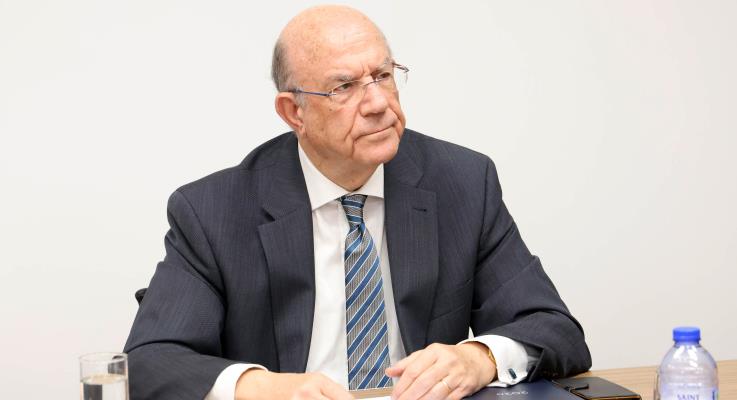Cyprus’ public debt is expected to fall close to 50 per cent of GDP by the end of 2025, well ahead of earlier targets that foresaw a drop below 60 per cent by end-2026, Finance Minister Makis Keravnos said on Wednesday after the council of ministers meeting.
Referring to the EU’s 2025 European Semester Spring Package assessment for Cyprus, he said the report acknowledges that economic growth remains strong despite a fragile international environment, while primary surpluses are high and debt is being reduced rapidly.
This faster decline, he noted, will “free up additional economic potential to increase development spending and defence.”
At the same time, Keravnos underlined that Cyprus is no longer classified as a country with macroeconomic imbalances, citing improvements in external and private debt.
The report, he added, also finds that efforts to diversify the economic model are bringing steady results, and that Cyprus is improving on most UN Sustainable Development Goals.
However, he also pointed to challenges. The report shows that Cyprus’ planned spending growth for 2025 is projected at 6.8 per cent, compared with the EU benchmark of 6 per cent.
Keravnos said this deviation could be corrected in the 2026 budget through measures such as abolishing unnecessary public service positions and making better use of staff transfers and interchangeability.
Turning to the payroll issue, he described public debate on the matter as “excessive”. He explained that the 2025 budgeted payroll for public servants is slightly lower than in the previous budget, with fewer positions than in all past budgets to date.
“We are following this course and the new 2026 budget will be at those levels,” he said, adding that specialised studies, beyond the International Monetary Fund’s (IMF), have been submitted to the ministry to address the issue.
Keravnos stressed that the number of central government employees stands at around 12,300, a figure that has remained stable or even declined in recent years.
Yet, he noted, EU membership requires the creation of new institutions and committees, which inevitably creates additional staffing needs.
By contrast, he said, the education and health sectors absorb very large numbers of employees, while the central government has made “drastic” efforts to cut costs.
Asked about the Automatic Cost of Living Adjustment (ATA), which is linked to the government payroll, Keravnos said the matter is being handled by the Labour Ministry in dialogue with social partners.
“What will be given and what will be done will be the result of the dialogue,” he said, noting the government only takes decisions holistically once all issues are considered.
Looking at other weaknesses flagged by the EU report, Keravnos pointed to low spending on research and innovation, standing at just 0.29 per cent of GDP compared with 0.72 per cent in the EU, as well as an underdeveloped capital market.
Businesses, he said, remain largely dependent on bank financing and face difficulties in obtaining loans.
To address this, the government has set up the €37.5 million Equity Fund, with €30 million from the state and the rest from private funds, managed by the European Investment Bank (EIB).
The fund has already begun investing, mainly in technology companies. A second step, he added, is the creation of the National Enterprise Development Organisation, whose roadmap has been approved by the council of ministers, with the necessary bills now under consultation.
In parallel, work is underway to upgrade the governance framework of state entities in line with international standards.
An action plan has been endorsed with contributions from all ministries, and a full proposal is expected to go to the council of ministers by the end of the year.
Meanwhile, efforts to reduce bureaucracy and rationalise the public service are “at an advanced stage,” he said.
On energy, Keravnos admitted that Cyprus remains dependent on oil products, while natural gas has yet to enter the energy mix.
Further challenges, he said, include waste and water management as well as a gap between market needs and available skills. The launch of new technical schools this year, Keravnos concluded, forms part of the government’s response to aligning education with labour demand.







Click here to change your cookie preferences